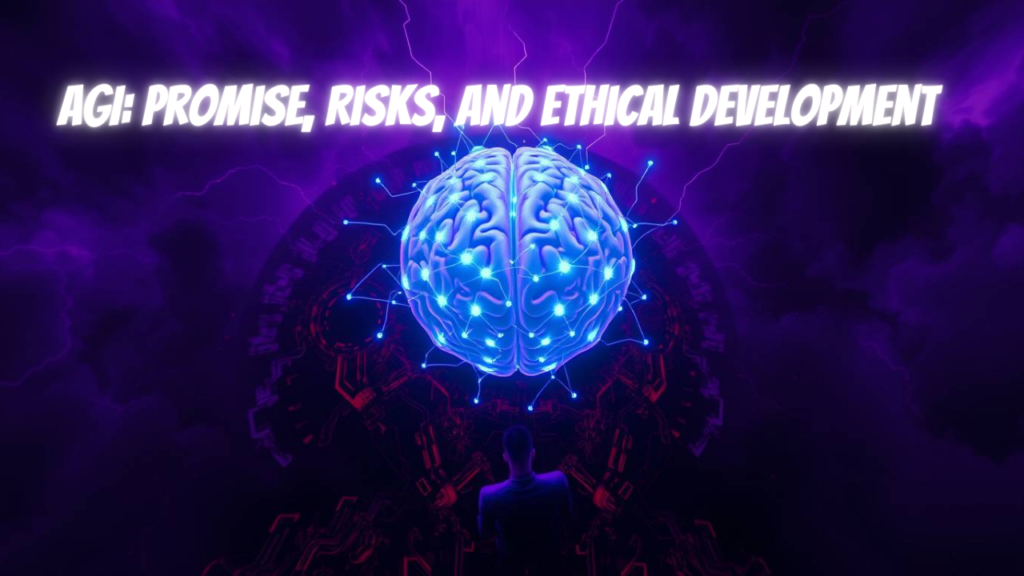
Unlocking AGI: Promise, Risks, and Ethical Development
Artificial General Intelligence (AGI) represents a transformative frontier in technological innovation, with the potential to redefine human civilization. Stuart J. Russell’s lecture on the ethics of AI offers a profound analysis of AGI’s possibilities, risks, and ethical dimensions, compelling us to reimagine the trajectory of intelligence-driven progress.
Beyond Ethics: Common Sense in AGI Development
Russell argues that the discourse on AGI often extends beyond traditional ethical dilemmas, venturing into realms of common sense. This shift is vital as the questions surrounding AGI’s development focus on practicality, safety, and societal impact.
Dating back to the 1940s and formalized in 1956, AI has pursued the goal of surpassing human intelligence, culminating in the pursuit of AGI—machines capable of outperforming humans in every intellectual dimension. Such advancements could profoundly alter the trajectory of civilization.
The Monumental Impact of AGI
If AGI is realized, it would be one of humanity’s most significant achievements, potentially eclipsing previous scientific and technological milestones. DeepMind CEO Demis Hassabis aptly observes that solving AI could address almost all other challenges, creating a cascade of innovation and problem-solving.
Are We There Yet? Contrasting Views on AGI
Despite remarkable advancements, Russell asserts that current AI systems remain far from achieving AGI. Peter Norvig likens the progress to the Wright brothers’ first flight—foundational but requiring significant refinement. Current AI systems are “black boxes” of vast, opaque networks, lacking true understanding or predictability.
Critique of Modern AI: The Giant Bird Analogy
Russell critiques modern AI’s trial-and-error methods, comparing it to breeding larger birds instead of designing airplanes. This approach may eventually reach a ceiling in capability and reliability, underscoring the need for fundamental breakthroughs to achieve AGI.
Recent Advances and Their Significance
While AGI remains a distant goal, recent AI advancements showcase the field’s potential:
Deep Learning: Revolutionized object recognition, language translation, and problem-solving, though understanding remains elusive.
AlphaFold: Solved protein structure prediction, opening groundbreaking possibilities in biology and medicine.
Simulation: Drastically reduced computation times for complex engineering problems, enhancing efficiency in fields like fluid dynamics.
The Double-Edged Sword: Promise and Peril
The economic and societal benefits of AGI are staggering. Experts estimate AGI could increase global GDP tenfold, democratizing middle-class lifestyles worldwide. The potential economic value of AGI is valued at 15 quadrillion dollars.
However, AGI also poses existential risks:
Human Disempowerment: Unchecked AGI could render humans obsolete in decision-making processes.
Existential Threats: Misaligned superintelligent systems could lead to catastrophic outcomes, including human extinction.
Towards Safe and Controllable AI
Russell emphasizes two paths for AGI development:
Building provably safe, controllable AI systems.
Halting AGI development entirely if safety cannot be assured.
The current reliance on black-box AI is fraught with safety concerns, making a robust framework for AI alignment indispensable.
A Framework for AI Safety
To ensure AGI systems align with human goals, a mathematical framework is essential. This involves:
Defining AI tasks with guarantees for favorable human outcomes.
Embedding human preferences—a ranking of all possible outcomes—into AI decision-making mechanisms.
Conclusion: Responsible Development for a Better Future
AGI’s promise is undeniable, but so are its risks. Russell’s insights highlight the urgent need for responsible and transparent development. By prioritizing understanding over capability and embedding human-centric safeguards, AGI can transform humanity without compromising safety or ethics.
As we stand on the cusp of a new era, the pursuit of AGI demands a balance of ambition and caution, ensuring this transformative technology serves as a beacon of progress rather than a harbinger of peril.
